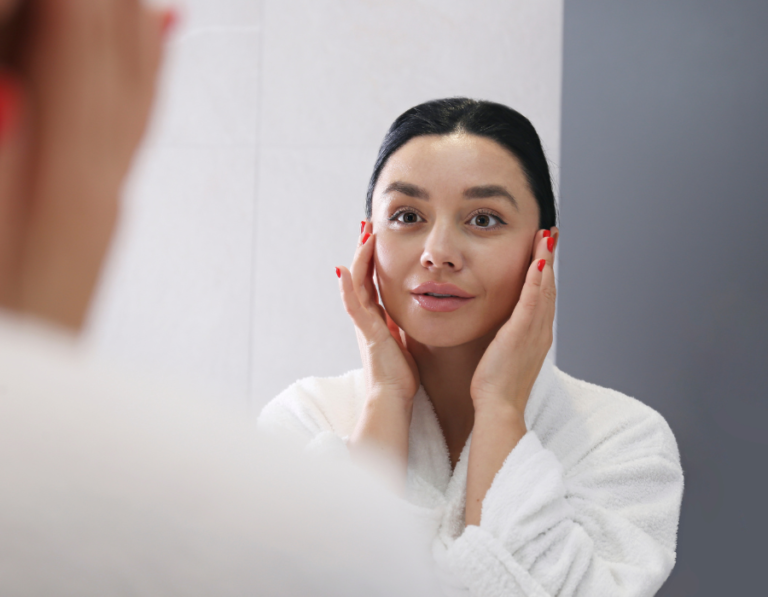
In the ever-evolving world of skincare, two powerhouses have emerged from the East, captivating beauty enthusiasts worldwide: Japanese skincare routine and K-Beauty. These Asian skincare philosophies, hailing from Japan and South Korea respectively, have revolutionized how we approach our daily routines and redefined our expectations of what skincare can achieve. While both promise radiant, healthy skin, their methods and philosophies diverge in fascinating ways, offering unique approaches to pursuing beauty.
Today, we are going to talk about Japanese Beauty or J-Beauty. J-Beauty, with its roots in centuries-old traditions, embraces simplicity and efficacy. It’s the zen garden of skincare – minimalist, purposeful, and deeply respectful of the skin’s natural balance. We have brought you the proper Japanese Skin Care Routine, with recommendations for every skin type.
Check out the blog-
The first step in the Japanese morning skincare routine is cleansing. This step removes any impurities, excess oil, and dead skin cells that have accumulated overnight.
Recommended Products:
Known as “lotion” in Japan, this step is akin to a toner in Western skincare. It helps to hydrate and prepare the skin for subsequent products.
Recommended Products:
Serums are concentrated on that target specific skin concerns such as hydration, brightening, or anti-aging.
Recommended Products:
Moisturizers or creams help to lock in the hydration and nutrients provided by the previous steps, creating a protective barrier on the skin.
Recommended Products:
Sunscreen is a crucial step in the Japanese morning skincare routine. It protects the skin from harmful UV rays, preventing premature aging and skin damage.
Recommended Products:
The Japanese approach to evening skincare is a meticulous ritual that focuses on cleansing, hydrating, and nourishing the skin. This routine typically consists of several steps, each designed to address specific skin concerns and promote overall skin health.
The cornerstone of Japanese skincare is the double cleanse method, which effectively removes makeup, sunscreen, and impurities accumulated throughout the day.
a. First Cleanse: Oil-based Cleanser
An oil-based cleanser is used to break down and remove oil-based impurities, makeup, and sunscreen.
b. Second Cleanse: Water-based Cleanser
Following the oil cleanser, a water-based cleanser is used to remove any remaining impurities and cleanse the skin thoroughly.
In Japanese skincare, “lotion” refers to a hydrating toner that prepares the skin for subsequent products.
Serums are concentrated formulas that target specific skin concerns and deliver active ingredients deep into the skin.
The delicate eye area requires special attention, and Japanese skincare often includes a dedicated eye product.
An overnight mask, also known as a sleeping pack, is the final step in the evening routine, providing intense hydration and nourishment while you sleep.
When incorporating these steps into your routine, it’s essential to consider your skin type and specific concerns. Oily skin types may prefer lighter, oil-free formulations, while dry skin types benefit from richer, more emollient products. Those with sensitive skin should opt for fragrance-free, gentle formulations.
The primary differences between J-Beauty (Japanese beauty) and K-Beauty (Korean beauty) lie in their skincare philosophies, routines, and ingredients.
J-Beauty:
K-Beauty:
J-Beauty:
K-Beauty:
J-Beauty:
K-Beauty:
So, above is everything about the Japanese skincare routine. Remember, that consistency is key in Japanese skincare. Regular use of these products, combined with a healthy lifestyle that includes proper sleep, hydration, and a balanced diet, can contribute to achieving the coveted “mochi skin” – a plump, smooth, and radiant complexion.
By following this evening Japanese skincare routine and selecting products suited to your skin type, you can nurture your skin overnight, allowing it to repair and rejuvenate while you rest. This holistic approach to skincare not only improves your skin’s appearance but also promotes a sense of self-care and mindfulness, aligning with the Japanese philosophy of beauty and wellness.
Bihaku is a term in Japanese beauty culture that refers to skin whitening. Before, pale skin used to be a symbol of beauty in Japan, leading to the popularity of Bihaku products which aim to lighten and brighten the skin.
Bihaku products are designed to address issues such as hyperpigmentation, uneven skin tone, and dull complexion. They often contain ingredients like kojic acid, which inhibits melanin production and helps to fade dark spots and discoloration caused by sun damage, acne scars, and aging.
In the ever-evolving world of skincare, the demand for effective and natural solutions has skyrocketed,… Read More
Summer is here and is the beach and all the casual outings. The best thing… Read More
Skincare is a very vast industry with new products getting launched almost every month. Everyone… Read More
Hello! Spring season. The Spring season is one of my favourite seasons. The reason is… Read More
Long, thick, fluttery lashes aren’t just reserved for the stars. They are reserved for our… Read More
Valentine's Day around the corner and ladies are excited about the outfit to impress their… Read More
This website uses cookies.